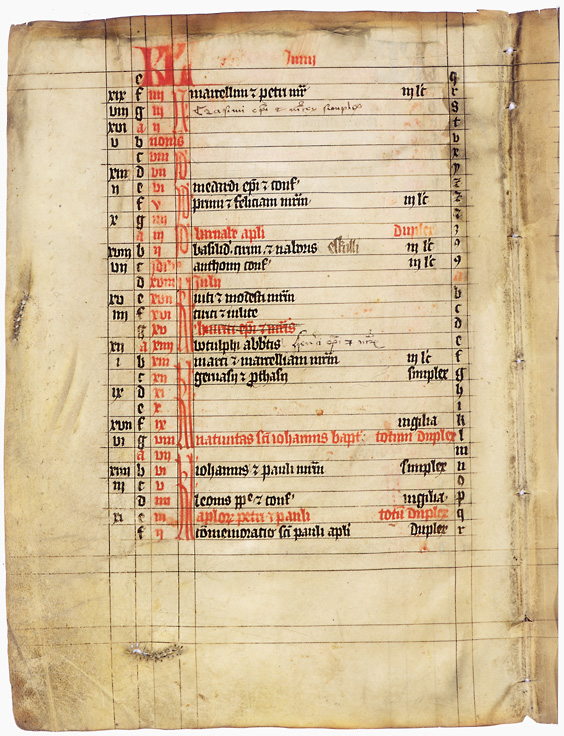
Calendar of saints
The calendar of saints is the traditional Christian method of organizing a liturgical year by associating each day with one or more saints and referring to the day as the feast day or feast of said saint. The word "feast" in this context does not mean "a large meal, typically a celebratory one", but instead "an annual religious celebration, a day dedicated to a particular saint".[1]
This article is about the calendar of saints in general. For specific calendars of saints, see Calendar of saints (disambiguation).The system arose from the early Christian custom of commemorating each martyr annually on the date of their death, their birth into heaven, a date therefore referred to in Latin as the martyr's dies natalis ('day of birth'). In the Eastern Orthodox Church, a calendar of saints is called a Menologion.[2] "Menologion" may also mean a set of icons on which saints are depicted in the order of the dates of their feasts, often made in two panels.
Connection to tropical cyclones[edit]
Before the advent of standardized naming of tropical storms and hurricanes in the North Atlantic basin, tropical storms and hurricanes that affected the island of Puerto Rico were informally named after the Catholic saints corresponding to the feast days when the cyclones either made landfall or started to seriously affect the island. Examples are: the 1780 San Calixto hurricane (more widely known as the Great Hurricane of 1780, the deadliest in the North Atlantic basin's recorded history; named after Pope Callixtus I (Saint Callixtus), whose feast day is October 14),[9] the 1867 San Narciso hurricane (named after Saint Narcissus of Jerusalem, feast day October 29),[9] the 1899 San Ciriaco hurricane (the deadliest in the island's recorded history; Saint Cyriacus, August 8),[9][10] the 1928 San Felipe hurricane (the strongest in terms of measured wind speed; Saint Philip, father of Saint Eugenia of Rome, September 13),[9] and the 1932 San Ciprian hurricane (Saint Cyprian, September 26).[9]
This practice continued until quite some time after the United States Weather Bureau (now called the National Weather Service) started publishing and using official female human names (initially; male names were added starting in 1979 after the NWS relinquished control over naming to the World Meteorological Organization). The last two usages of this informal naming scheme in Puerto Rico were in 1956 (Hurricane Betsy, locally nicknamed Santa Clara after Saint Clare of Assisi, feast day August 12 back then; her feast day was advanced one day in 1970) and 1960 (Hurricane Donna, nicknamed San Lorenzo after Saint Lawrence Justinian, September 5 back then; feast day now observed January 8 by Canons regular of St. Augustine).[9]